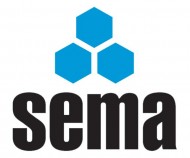The first question this month asks about the need for load notices and securing of racking where no FLT’s or pallets are used and the second asks about the testing of cantilever racking that has been moved.
 Shelving, To Bolt or not to Bolt?
Shelving, To Bolt or not to Bolt?
Q. We have branches across the UK, which have shelving in their warehouse space. There is no FLT activity conducted within the branches, no storage of pallets.
Only individual items / cartons are stored on the shelving.
The items are picked by hand and small ladders / stools are used to access higher location.
Would you be able to provide me with guidance as regards to:
• Shelving – Load Notice; and
• Shelving – Bolting.
The shelving is not bolted down, and there are no Load Notices on the shelving.
Would you recommend bolting to the floor and Load Notices from the information provided?
A. Firstly considering the bolting:-
If the supplier recommends bolting the shelving to the floor then it should be bolted
If any mechanical handling equipment is used adjacent to the shelving it should be bolted to the floor
If the height (height to top shelf level) to width ratio is greater than 4 to 1 then the hand loaded shelving should be bolted to the floor
If the racking moves out of line during general use then it should be bolted to the floor
It appears from the photos that you may be able to avoid bolting the shelving to the floor
The load notices is more complex. There is no specific law stating that you must have load notices on your shelving. However providing load notices is good practice and is one way of complying with aspects of general safety law in providing your staff with information and guidance to allow them to use the system safely.
SEMA recommend that shelving designed in accordance with the SEMA guidelines should be provided with load notices and we would recommend that the supplier is requested to provide load notices for your shelving.
If you decide not to provide load notices you should ensure that the information usually found on the load notice is adequately provided by other means such as training, procedures, work systems, etc. and that the relevant information and risk assessments are fully documented.
Moving and testing
Q. We are looking to move a few of our cantilever racks at the factory and wish to have it fully tested prior to use.
A. It is not normal to carry out a load test on re located racking for two reasons. The first is that it is very expensive to do this and secondly if a failure occurs during the test then it can also be dangerous. Even if failure does not occur then the rack is being taken close to failure point some damage may result which might not be noticeable during the course of the test. Normally components of rack structures are tested in order to develop manufacturer’s load tables rather than full systems.
What is more normal is that if the original manufacturer of the racking can be identified then they would be asked to confirm that it is re-built in accordance with recommendations and a new load sign be produced based on manufacturers load tables.
If the manufacturer cannot be identified there are certain consultants who would calculate carrying capacities from first principles and place a certified load plaque on the rack based on these calculations.
The consultant approach is likely to be more expensive however in the absence of being able to identify an original supplier it is often the only option.
SEMA is delighted to be working with WLN on the storage Question and Answer Column which is published in WLN on a monthly basis. On the WLN website is a list of previously published columns which we hope you find useful.
Please note that SEMA Users Club members also have access to a comprehensive range of additional storage related questions and answers.
SEMA Annual Safety Conference 2013 – a date for your diary
The 2013 SEMA Safety Conference has been scheduled for Thursday, 7 November; the venue will be the National Motorcycle Museum, Solihull. For full details and a booking form contact SEMA at enquiry@sema.org.uk
SEMA Technical Enquiries
We hope you find the above articles, and those in previous editions, interesting. If you have a query send it to us by fax or email and we will do our best to have it answered by one of our technical experts.
SEMA Rack Safety Awareness and Inspection Courses
SEMA runs a one-day safety course on Rack Safety Awareness and Inspection. These courses are aimed at end users, giving an in-depth look at the need for inspections, how to conduct an assessment and what actions to take when this is completed. These courses are normally held at the SEMA headquarters but arrangements can be made to hold them at the delegates’ premises.
SEMA Approved Rack Inspectors Qualification
This qualification is aimed at professionals who conduct rack surveys as an integral and significant part of their duties. It involves delegates in undertaking an in-depth SEMA Course, together with an examination and practical assessment. CPD will be an important part of the qualification, demonstrating to end users that SEMA Approved Inspectors maintain a high professional standard.
SEMA Publications
SEMA has 26 publications in stock – Codes of Practice, ‘Guides’ and European documents – all of which are available from our Offices. For further information on these documents contact SEMA or visit our website, www.sema.org.uk. and click on ‘Codes of Practice’.
SEMA USERS Club
SEMA runs a USERS Club designed to be of benefit to purchasers and users of storage equipment. Members receive newsletters, access to specialised events and discounted rates on publications and codes of practice.




Comments are closed.